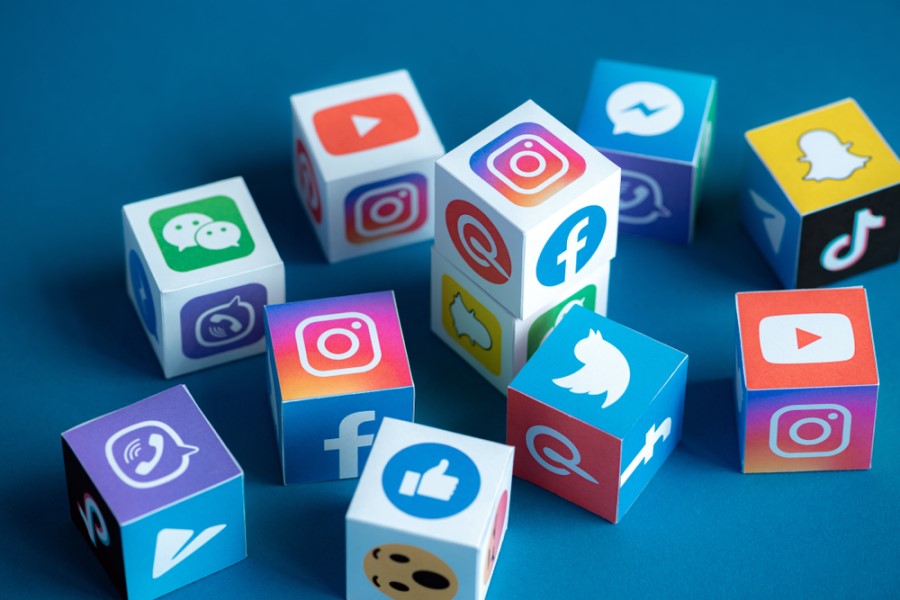Why social media is a great tool for workplace wellbeing

Fast forward a few months and everything has changed. The COVID-19 pandemic has forced us all into a new style of life, at least for the near future. While lockdown restrictions are easing, many employees are still working from home ‘offices’, with much of the UK’s workforce still physically separated from each other.
In this context, a sense of social wellbeing is extremely important. It’s vital to make sure you have the right engagement and communications strategies in place to help your employees feel connected and supported. Physical distance does not have to mean emotional distance. It’s important for your employees to know you are there for them and for them to be able to interact with each other. This is where digital and social technology can really come into its own.
Using digital technology to support employee engagement
From work-based software to more social apps, there are plenty of tools you can use to keep your workforce connected and engaged.
Here are a few examples:
- Turn phone calls into video calls to make your employees feel connected to each other.
- Set up a content hub on your intranet where employees can easily find useful information and practical tips to help them. Examples include guidance on working from home safely, and support for their mental and physical wellbeing.
- Set up groups on social forums to connect like-minded people and maintain personal and professional connections. Don’t forget to ensure you have clear social media or other suitable guidance in place.
- Hold real-time Q&A sessions giving updates on strategy and next steps. Where appropriate, make these more informal than usual – ask employees how they’re feeling and share stories.
- Use technology to share and celebrate successes and to thank your employees.
- Use health and wellbeing apps and push notifications to continue looking after your employees’ wellbeing.
Preparing employees for a return to the working environment
As some employees begin to return to the workplace, it’s important that you have robust communication strategies in place to prepare them for the challenges this will entail. As well as the necessity to provide a safe working environment, it's important to consider the mental health of employees. The new normal won’t be the same as the pre-lockdown version – and some members of staff will need reassurance that it’s safe for them to come back.
Using digital and social technology to support your communications strategy
- Arm yourself with information – the digital world helps enable this – from easily accessible advice on government websites, through to topical articles and shared best practice on social networking sites.
- Use video conferencing technology to connect with your employees and set up forums to get them involved in decision making – they should be confident that any return to work has been carefully thought through, with full regard to their safety and feel like their family and other personal circumstances have been taken into account.
- Help employees stay connected through regular communication and an open workplace culture – inclusivity is key to helping an employee feel they’re returning to a safe and caring environment. Good communication starts before the return to work, so that employees feel confident the workplace is safe and know what’s expected of them. If it’s feasible, share a video of the new office environment so that employees can visualize their new working environment and understand how the new ways of working will operate in practice.
- Ensure line managers hold regular conversations with employees to talk through any specific issues or individual concerns. Digital conferencing can help enable this.
- Use mental and physical wellbeing apps to support employees and encourage positive behaviours.
- Enable virtual training – such as line manager training for mental health.
Positive signs
Our Health of the Workplace research revealed a world of social media worries, not connectivity. It highlighted:
- concerns about excessive or addictive usage
- worries about the psychological pressures social media brings
- fears about what it could mean for future generations.
While the issues highlighted by our Health of the Workplace research are likely to remain, the current situation shows, social media (in and outside of work) is a great tool provided you are its master, rather than being a slave to it. Using social and digital media well can help build positive, supportive relationships. You and your employees can use it to share ideas and work through solutions. You can work collaboratively even when physically separated.
For more support to help your employees through these uncertain times visit our Business Perspectives website which includes topical articles and useful guides.
The author is Debbie Bullock UK wellbeing lead at Aviva.
This article is provided by Aviva.
New ways of communicating and engaging employees are just one of the outcomes from the COVID-19 crisis. Even six months ago, the idea of relying on social and digital media tools to enable collaboration and emotional connection would have surprised many, but now it is becoming the norm.
Join us and Aviva at the Employee Wellbeing Congress every Wednesday between 9 and 30 September 2020 for the chance to reimagine the potential and possibility of a new future, a world of work driven by collective purpose and wellbeing. Four days across four weeks to regroup, recover and reimagine.
Supplied by REBA Associate Member, Aviva
Our purpose is to be with you today, for a better tomorrow.







